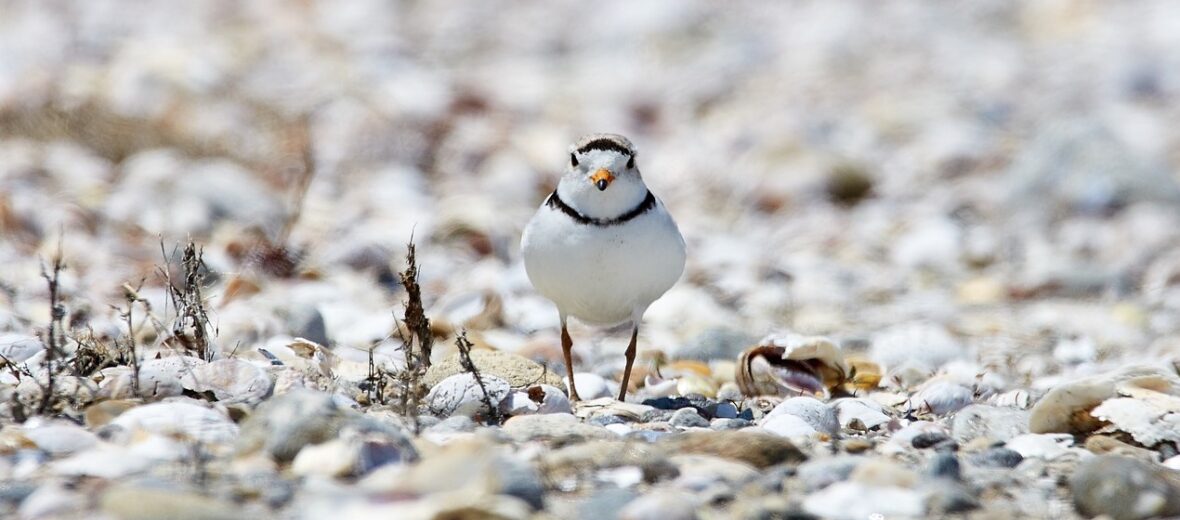
The piping plover is found not only along the Atlantic Coast but also in the Great Lakes regions of the United States, Canada, and in the Caribbean. They prefer rocky shores and open sandy beaches. Inland populations prefer rivers, lakeshores, and wetland areas. These little birds spend most of their time darting along shorelines in search of food. Sadly, due to habitat destruction, human interference, invasive species, disease, and climate change these critters are listed as Near Threatened by the IUCN. There is only an estimated 8,400 wild individuals remaining. But efforts are underway to bring the species back into sound numbers again.
First the Stats…
Scientific name: Charadrius melodus
Weight: Up to 1.7 ounces
Length: Up to 7 inches
Wingspan: Up to 15 inches
Lifespan: Up to 5 years
Now on to the Facts!
1.) Piping plovers are cathemeral (active during the day and night).
2.) While typically seen in pairs, they can be spotted in larger groups of up to 100 individuals.
3.) These birds are migratory and fly north around mid-March. They fly south again in August.
4.) A group of plovers is called a congregation, stand, or wing.
5.) When flying or standing, they produce a soft “Peep peep” call. If they are startled, they will emit a “pee-werp” call.
But wait, there’s more on the piping plover!
6.) Plovers eat insects, snails, marine worms, and crustaceans.
7.) Gulls, feral cats, foxes, rats, and raccoons are just some of their predators.
Did you know…?
Piping plovers will often fake a broken wing to draw a predator’s attention towards themselves and away from the chicks.
8.) The piping plover is seasonally monogamous (stay with 1 partner only during the mating season).
9.) Males engage in an elaborate courtship ceremony that includes stone throwing and courtship flights which feature multiple dives. The male starts off his ritual by standing upright and stampeding towards the female. He then puffs himself up and quickly stomps his legs.
10.) After carefully examining the scrape (nest) made by the male, the female will adorn the scrape with shells and stones in an effort to better camouflage her eggs and eventual chicks.
But wait, there’s still more on the piping plover!
11.) Females lay up to 4 eggs that incubate in up to 27 days.
12.) Chicks depend on the art of camouflage and freezing in place to avoid the watchful eyes of a predator.
13.) These birds utilize the art of the foot-tremble technique in order to drum up prey. They vibrate an extended foot in the wet sand in order to drive their prey out into the open.
14.) Their name comes from the bell-like whistles they make, which can be heard before the bird is actually seen.
Now a Short Piping Plover Video!
Be sure to share & comment below! Also, check out the Critter Science YouTube channel. Videos added frequently!
Want to suggest a critter for me to write about? Let me know here.



